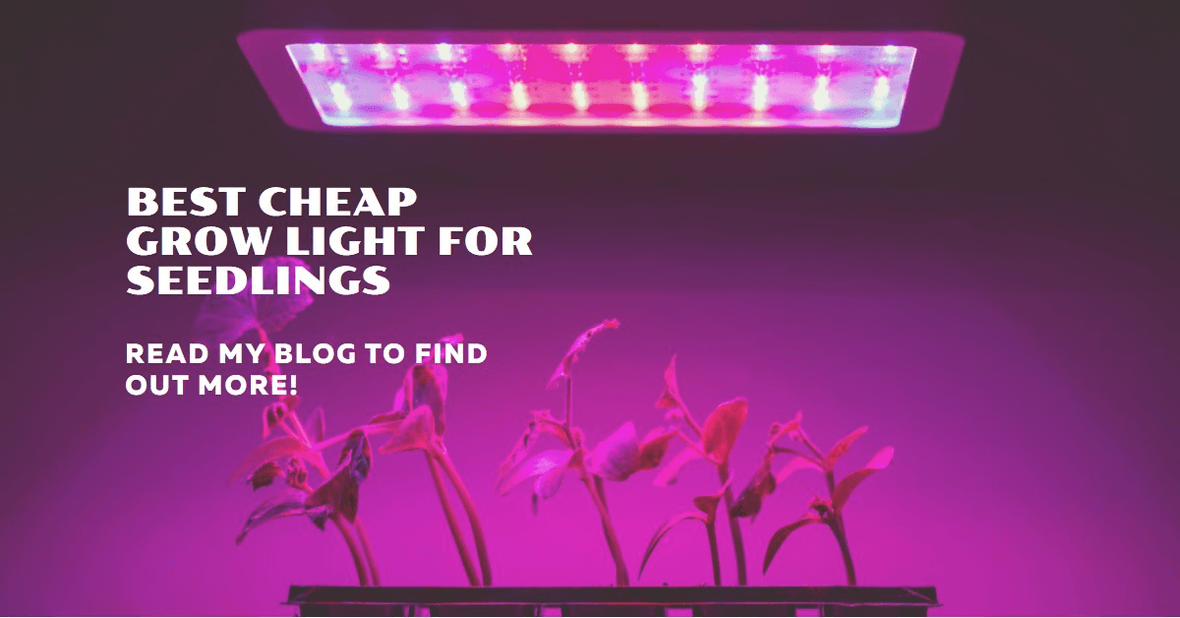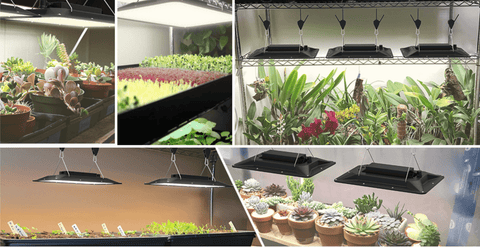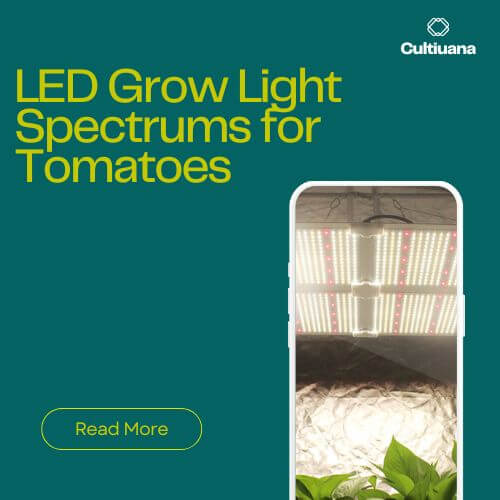
Best Cheap Grow Light For Seedlings
Growing plants indoors is a rewarding and enjoyable experience. Still, it can also be tricky, because you have to make sure you provide them with the same amount of water, humidity, and light they would receive outside.
Lighting is a major concern for indoor growers, indoor growers use grow lights to help their plants grow well, from seedling to flowering.
Most plants need different amounts of light at different growth stages. They can tolerate 600-1000 watt full spectrum LED grow lights during the vegetative and flowering phases. Seedlings, however, require a different approach since too much light can harm them.
That being said, growers should use a particular seedling grow light that is designed to provide just the right spectrum for seedlings. This will ensure that the plants always get enough light while they are young. In this article, we will go through some questions concerning the best cheap grow lights for seedlings.

What is Seedling Grow Light?
Grow lights for seeds are hung at a height of 24-36 inch above them. They emit light like the sun and promote seed growth.
Many growers use grow lights to start seed germination indoors before moving the plants outside. Some also use these lights to grow plants indoors year-round.
The growth of plant seeds requires an appropriate amount of light, and the wattages generally varies according to different seed varieties (generally not higher than 400 watts).
These lights can be either fluorescent or LED, and come in a variety of sizes and intensities depending on the needs of the plants.
What Kind of Seedling Grow Light Do I Need?
As we mentioned above, you'll find the most common types of grow lights for seedlings are LED lights and fluorescents.
Regarding fluorescent grow lights, T5s are considered the best choice for plants, as the T5 is a newer technology and can produce slightly more light in a smaller size than the older T8 technology can.
T8s are more affordable to buy and they do not cost quite as much to run either. They have been around longer and less expensive to manufacture and can still function as seedlings as well.
Unlike fluorescent lighting, LED bulbs are long-lasting and much more energy-efficient. In addition, LEDs don't produce a lot of heat, so you don't have to worry about seedlings becoming overheated.
If you're on a budget and want to use LED seedling grow lights, a full-spectrum LED light bar may be a good option. It's relatively cheaper and gives your plants a full range of light from seedling to flowering.
However, it does have one downside - the lower wattage (usually between 80 and 120 watts) means it can only cover a small area or only 1-2 plants.
But if you have enough money, more powerful full-spectrum LED grow lights (600-800 watts) might be a better choice. It's pricier to start with, but the cool thing is that most of these lights have a dimmer.
That means you can change the brightness to match your plants' growth. So you only buy it once, which could save you some cash down the line.
How Much Light Intensity Do Seedlings Need?
There are two important factors here, distance from the light source and hours of light.
Depending on the kind of light you're using, your plants might not be getting enough light strength, or PPFD. We've found out that seedlings need between 300-600 units of light (μmol/m2/s) to grow properly.
So, you might need to move your seedlings closer to or further from the lights to make sure they get the right amount of light.
In simple terms, for baby cannabis plants, they do well with light levels around 100-300 units. Lettuce prefers a bit more light, about 400 to 600 units. If you're growing tomatoes indoors, aim for 400-500 units of light - that's the sweet spot. Strawberries, on the other hand, like a bit less light for their leafy growth stage, around 180–270 units. With most LED grow lights, the best advice is to follow what the maker of the light says.
Best Cheap Grow Light for Seedlings
Cultiuana CT-100 is the best cheap grow light for seedlings. It gives even light coverage, ideal for 3' x 3' veg stage and 2' x 2' bloom stage. This means your plants get consistent light all around.

It also has a full light spectrum, mixing ir, red, and white colors, so it imitates sunlight for your plants, helping them at every growth stage.
Plus, you can adjust the light's brightness from 40% to 100% with a knob, perfect for any growing situation.
Best of all, the CT-100 uses only 100 watts, replacing a 150-watt HPS light, which means you save energy and get better results than with older lights.
Seedling Light Schedule
How to schedule seedling grow light time? At first, they don't need much. A white fluorescent tube, some CFLs, or small light bulbs work great. If you're using a powerful LED grow light, turn it down low or lift it up high.
Once your seedlings peek out of the soil, keep the light 24/7. Do this for a few weeks, or even up to a month. This helps your seedlings adjust to life above the ground.
As your seedlings grow bigger and enter the veg stage, switch to 18 hours of light and 6 hours of darkness. This gives your plants a break, like their own night's sleep.
Finally, when it's time for your plants to flower, change the light again. This time, give them equal light and dark: 12 hours each. This signals your plants to start making flowers.
Seedling Light Distance You Should Know
Considering the power and distance of your grow light for seedlings, it depends on the strength of your light. What grow light are you using.
For instance, if you're using a 24w T5 fluorescent light, it's recommended to hang the light 6 to 10 inches away from your seedlings. This distance allows your plants to soak up enough light without causing any damage.
However, if your setup involves Cultuana CT-100 LED grow lights, you should hang them a bit further, about 16 to 24 inches from the seedlings, and dim the light output to 40-60%.

This prevents the seedlings from getting too much light, which could harm their growth. It's all about finding the right balance for your specific grow lights and seedlings.
Can Seedlings Get Too Much Light?
- Am I giving my seedlings too much light?
If your seedlings are getting too much light, they'll start showing clear signs of distress. First, the seedlings may start to look burnt, a clear indication of light overload.
Additionally, you might notice that the seedlings start to discolor, or even have brown or yellow tips on their leaves, a common symptom of light stress. In more severe cases, the seedlings may start wilting or their leaves may begin curling up.
These signs are an urgent plea from your seedlings, indicating that the light intensity needs to be reduced promptly to prevent further damage.
If you see these signs, try moving the light further away from the seedlings.
- How can I tell the seedling with not enough light
When your seedlings aren't receiving enough light, they'll start showing certain signs of struggle. You might find that the seedlings grow "leggy," with their stems becoming too long and thin as they stretch towards the light.

In addition, the seedlings could turn pale green or yellow, indicating they're not producing enough chlorophyll due to inadequate light.
They might also have long gaps on the stem between nodes, which is another sign of insufficient light. In more severe cases, seedlings might even start dropping their leaves or their growth could slow down drastically.
These signs are clear indicators that your seedlings need more light for healthy growth.
If you notice these symptoms, or move your grow lights closer to the seedlings.
Do a quick check: The best cheap grow light for seedlings provide compact, nice lighting place your hand on top of the seedling at its highest point. Your hand will feel hot if the light is too close. Other than that, everything goes, but keep in mind that a light that is placed too high can result in a dangerous situation. as a result, the seedlings will stretch, which is not what you want.





